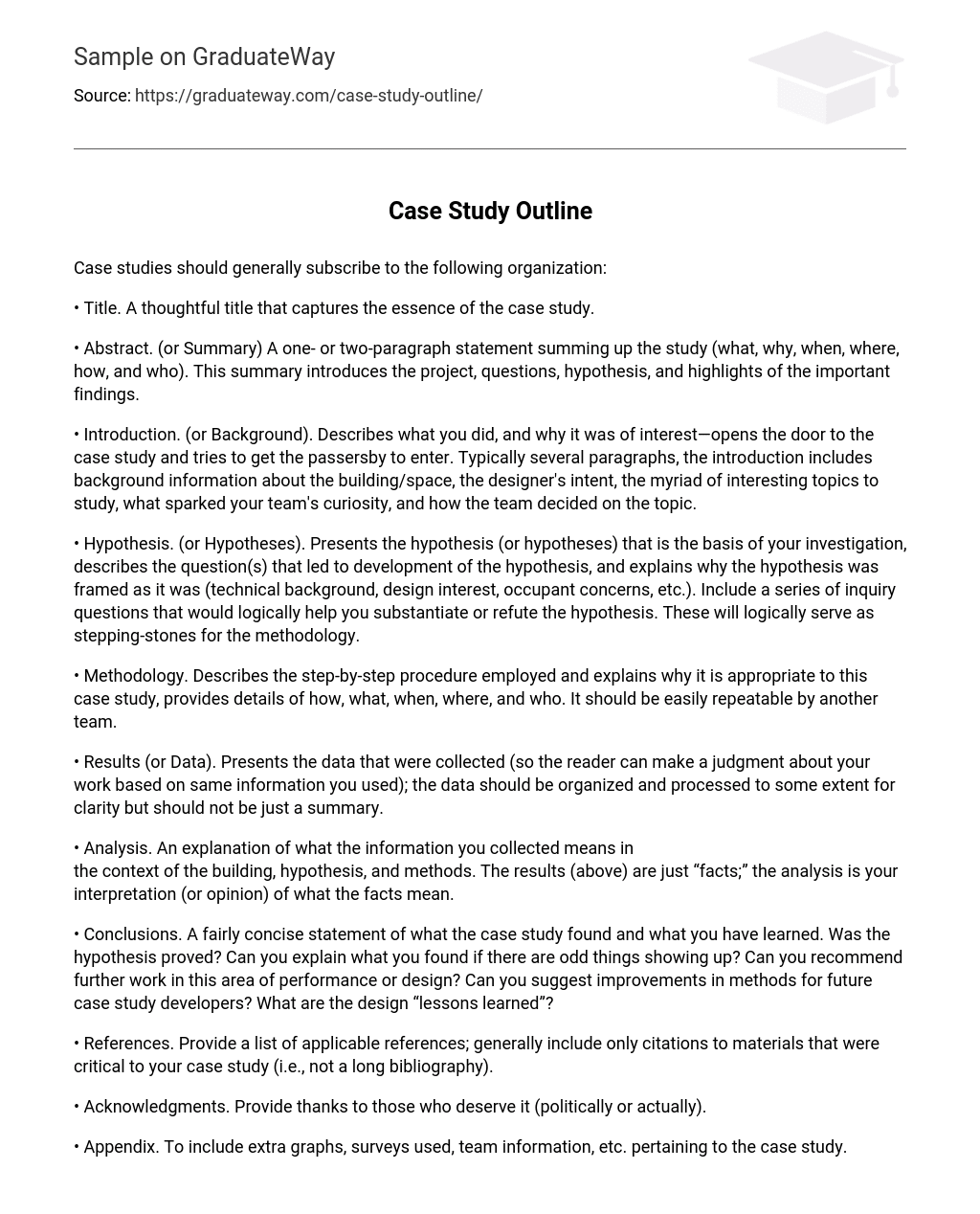Case studies should generally subscribe to the following organization:
- Title. A thoughtful title that captures the essence of the case study.
- Abstract. (or Summary) A one- or two-paragraph statement summing up the study (what, why, when, where, how, and who). This summary introduces the project, questions, hypothesis, and highlights of the important findings.
- Introduction. (or Background). Describes what you did, and why it was of interest—opens the door to the case study and tries to get the passersby to enter. Typically several paragraphs, the introduction includes background information about the building/space, the designer’s intent, the myriad of interesting topics to study, what sparked your team’s curiosity, and how the team decided on the topic.
- Hypothesis. (or Hypotheses). Presents the hypothesis (or hypotheses) that is the basis of your investigation, describes the question(s) that led to development of the hypothesis, and explains why the hypothesis was framed as it was (technical background, design interest, occupant concerns, etc.). Include a series of inquiry questions that would logically help you substantiate or refute the hypothesis. These will logically serve as stepping-stones for the methodology.
- Methodology. Describes the step-by-step procedure employed and explains why it is appropriate to this case study, provides details of how, what, when, where, and who. It should be easily repeatable by another team.
- Results (or Data). Presents the data that were collected (so the reader can make a judgment about your work based on same information you used); the data should be organized and processed to some extent for clarity but should not be just a summary.
- Analysis. An explanation of what the information you collected means in
the context of the building, hypothesis, and methods. The results (above) are just “facts;” the analysis is your interpretation (or opinion) of what the facts mean. - Conclusions. A fairly concise statement of what the case study found and what you have learned. Was the hypothesis proved? Can you explain what you found if there are odd things showing up? Can you recommend further work in this area of performance or design? Can you suggest improvements in methods for future case study developers? What are the design “lessons learned”?
- References. Provide a list of applicable references; generally include only citations to materials that were critical to your case study (i.e., not a long bibliography).
- Acknowledgments. Provide thanks to those who deserve it (politically or actually).
- Appendix. To include extra graphs, surveys used, team information, etc. pertaining to the case study.





